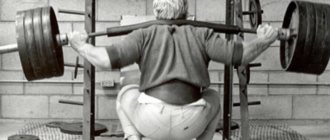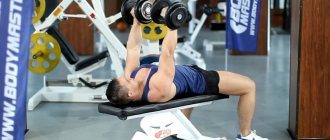In gym programs, bodyweight exercises are becoming increasingly rare. The complexes contain more exercises with free weights and on machines. But push-ups with all sorts of variations have not yet been forgotten. The advantages of this exercise are that variations of push-ups allow you to train muscles from scratch, or diversify the program with a new and effective technique.
Push Up Guide
The ability to do push-ups is a skill that anyone can learn and constantly improve. Anyone should be able to defy gravity and perform a sequence of several push-ups. All it takes is work on yourself. As with any bodyweight exercise, it takes time for a person's body to get used to the movement, remember it and make it part of everyday life. The good thing is that our body gets used to this kind of exercise very quickly, but the bad thing is that it also quickly forgets the movement if we take too long a break between workouts. Regular exercise will help solve the problem.
Our body is a kind of biomachine; it learns and gets used to what is required of it. For push-ups, you need to have a strong torso, powerful chest and triceps, and core muscles. It is on the development of this muscle group that this exercise will focus. It will become easier as your body gets used to it, so don't forget to increase the number of repetitions and make the exercise more difficult.
What muscles work when doing push-ups?
The ability to do push-ups technically correctly will be useful to an athlete involved in any sport. Push-ups are often called “reverse bench presses,” since the biomechanics of these exercises are almost identical, only the plane in which the movement is performed differs. To perform the exercise correctly, it is important to know which muscles are working at this moment.
The main part of the load when performing push-ups is taken by the pectoral muscles and triceps, and the load can be varied: the wider the arms are, the smaller the amplitude and the more the pectoral muscles work; the narrower the position, the greater the amplitude and the more the triceps work.
To be extremely precise, when describing which muscles work when pushing up from the floor, it should be noted that they are loaded
- The lower and outer parts of the pectoral muscles,
- Medial triceps, anterior deltoids,
- gluteal muscles,
- Abdominal and lower back muscles.
Therefore, if you do not have the opportunity to visit the gym several times a week, regularly doing push-ups will be enough to keep these muscle groups in good shape.
Add pull-ups, squats with your own weight and any basic abdominal exercise to push-ups and you can easily work all muscle groups at home.
Of course, this set of exercises will not be enough to develop strength or gain impressive muscle mass, but it will be enough to keep yourself in shape.
The most common mistakes when performing the exercise
Elbow position
- Incorrect: elbows point to the sides;
- Correct: Press your elbows lightly and squeeze your shoulder blades together.
Body position
- Incorrect: sagging abdomen, chest;
- Correct: Keep your hips in line with your shoulders.
Position of hands
- Incorrect: hands further than the shoulder line, elbows in the shape of the letter T;
- Correct: the hands are in line with the shoulders, the elbows are in the shape of the letter A.
Push-up program for a month
Once you have mastered the correct push-up technique, you should begin to gradually try to increase your result. Not a single athlete in the world is able to perform a hundred push-ups in one approach in the first training session. The program presented below is designed for 30 days, with one day of rest between workouts. This training method will help beginning athletes quickly achieve decent results.
| Workout number | 1 | 2 | 3 | 4 | 5 | 6 | 7 | 8 | 9 | 10 | 11 | 12 | 13 | 14 | 15 |
| Number of approaches and repetitions | 4x12 | 3x15 | 5x18 | 4x22 | 3x26 | 4x30 | 5x32 | 6x35 | 5x38 | 4x42 | 3x45 | 5x44 | 4x46 | 4x48 | 5x50 |
You can also download this program from this link.
Perfecting push-ups in 30 days
This chart is a 30-day program to increase muscle strength in your upper body and abdominals.
The goal of the program is to gradually move from variations to the full version of this exercise in 30 days.
Approximate training plan for 30 days from scratch
| Day 1 | Day 2 | Day 3 | Day 4 | Day 5 |
| Scapular wall push-ups8–12 reps, 2–3 sets | Basic wall push-ups 8–12 reps, 2–3 sets | Basic wall push-ups 8–12 reps, 2–3 sets | Incline push-ups 8–12 reps, 2 sets | Incline push-ups 8–12 reps, 2 sets |
| Day 6 | Day 7 | Day 8 | Day 9 | Day 10 |
| Rest | Rest | Scapular push-ups on the floor 8–12 reps, 2–3 sets | Scapular push-ups on the floor 8–12 reps, 2–3 sets | Basic push-ups on the floor 8–12 reps, 1 set |
| Day 11 | Day 12 | Day 13 | Day 14 | Day 15 |
| Basic push-ups on the floor As many reps as you can | Basic push-ups on the floor 8–12 reps, 1–2 sets | Rest | Rest | Scapular push-ups from the wall Incline push-ups Basic push-ups on the floor 8–12 reps, 1–2 sets |
| Day 16 | Day 17 | Day 18 | Day 19 | Day 20 |
| Basic push-ups 4-6 reps, 1-4 sets *Record the number of reps and sets for this week | Basic push-ups 4–6 reps, 1–4 sets | Basic push-ups 4–6 reps, 1–4 sets | Basic push-ups 4–6 reps, 1–4 sets | Rest |
| Day 21 | Day 22 | Day 23 | Day 24 | Day 25 |
| Rest | Triceps push-ups 8–12 reps, 1 set | Diamond incline push-ups 8–12 reps, 1 set | Basic push-ups Triceps push-ups Diamond incline push-ups 8–12 reps, 1–2 sets | Basic push-ups Triceps push-ups Diamond incline push-ups 1 set, but as many reps as you can |
| Day 26 | Day 27 | Day 28 | Day 29 | Day 30 |
| Timed test! As many push-ups of your choice as you can in 3-5 minutes | Triceps push-ups 8–12 reps, 1 set | Diamond incline push-ups 8–12 reps, 1 set | Rest | Basic push-ups Triceps push-ups Diamond incline push-ups 1 set, but as many reps as you can *Record your progress to see your results |
Don't forget about technology and more!
- Hands and feet should be hip-width apart.
- Try to keep your fingers in line with your armpits.
- Keep your head and neck in line with your spine.
- Engage your core muscles to protect your spine.
- Keep your elbows slightly tucked in rather than too wide apart.
- Drink plenty of fluids during all your workouts.
- If it suddenly becomes difficult to maintain proper form, stop the exercise.
Scapular wall push-ups
- Stand facing the wall, at a distance of 1-1.5 m from it.
- Place your hands on the wall at shoulder height and shoulder-width apart, with your fingers slightly turned outward.
- Without bending your elbows, squeeze your shoulder blades together, pointing your chest toward the wall.
- Don't lower your hips or jut your chin forward. Maintain a straight line from head to toes and tighten your core muscles.
- Return to the starting position, that is, spread your shoulder blades.
Scapular push-ups on the floor
A low range of motion exercise that involves retracting and abducting your shoulder blades. Resisting gravity makes the exercise more difficult and develops strength.
- Get on your knees.
- Place your hands at the same level as your shoulders and slightly wider than them, with your fingers slightly turned outward.
- Stretch one leg first, then the other back. The body is straightened, the core muscles are tense.
- Without bending your elbows, squeeze your shoulder blades together, mentally directing your chest toward the floor.
- Don't lower your hips or move your chin.
- Spread your shoulder blades to return to the starting position.
Triceps push-ups
- Get on your knees.
- Place your hands so that they are in line with your shoulders, armpit-width apart, with your fingers slightly turned outward. The hands are placed a little closer together in this variation of the exercise.
- Extend one leg behind the other behind you, focusing on your toes, keeping your body completely straight.
- Lower your chest toward the floor as you slowly inhale, bending your elbows back toward the sides of your body. Keep your head, back and hips straight without relaxing your core muscles.
- Lower yourself until your shoulders are level with your elbows.
- Slowly return to the starting position and exhale.
Diamond incline push-ups
- Kneel down facing a bench or tabletop at a distance of 1-1.5 m from it.
- Place your hands on the edge of the bench with the index fingers and thumbs of both hands touching in a diamond shape.
- Extend one leg and then the other behind you, placing them hip-width apart. The body is completely straight.
- As you inhale, lower your chest toward the bench, slowly bending your elbows. Keep your back and hips straight and your core tight.
- Slowly return to the starting position and exhale.
- To make the exercise easier, spread your fingers a few centimeters.
World records in push-ups
The Guinness World Record for the most push-ups is held by Japanese athlete Minoru Yoshida, set in October 1980. The athlete was able to perform 10,507 push-ups in one approach without stopping.
Another discipline that is no less interesting is push-ups on one arm in 60 seconds. The world record belongs to the Georgian athlete Giorgi Basilashvili, who was only 16 years old at the time of setting the record. Basilashvili was able to complete 157 repetitions in one minute.
Italian Charles Servicio did more than 46,000 push-ups in 24 hours. Thus, he set another world record in the category “Most push-ups on the floor in 24 hours.”
Don’t let these five-digit numbers seem so unattainable and unrealistic to you. Below is a table that shows a very effective push-up pattern. If you build your training program with this framework in mind, you will make significant progress very quickly, even if you start from scratch. A little perseverance, regular exercise and the pursuit of your goal - and it is possible that the next record for push-ups will be yours.
How to train yourself to do push-ups every day?
The army uses deep push-ups to make recruits stronger and more resilient. Soldiers must do push-ups every day. You, in turn, must train your body to do as many push-ups as you feel comfortable with: ten, twelve, twenty or forty, without exhausting your muscles. Get into the habit of doing push-ups at the same time every day and experience the benefits of this movement for yourself. For example, if you do only five times a day, in a month you will do 150, in a year 1800.
See also: how to increase the number of push-ups.
Challenge your limits and your body by simply increasing the number of push-ups over time. How to do it?
Plus one: increase the total number of push-ups per day by one. For example, on the first day of the month you do five, on the second day six, on the third day seven, and so on. At the end of the month there is an automatic reset and everything starts again. On the first day of the next month, do it again 5 times, etc.
Plus five : At the end of each month, you increase the total number of daily push-ups by five, that is, at the beginning of the second month you will have already performed 10 times.
Counting: Increase the total number of daily push-ups per day of the month. On the first day you do it five times, on the second you add 2 more times, on the third - three (total already 8). Continue until you reach the last day of the month, where you add the day of the month to the initial number you started with. At the end of the month, start over.
Countdown: Countdown is the exact opposite of the previous technique. You can comfortably do 5 push-ups, and there are 31 days in a month. You start by doing 5 + 31 = 36 times. On the second day you add 30 more to 5, on the third 29 and so on. On the last day of the month it will be only 5.
Up and Down: Add one each day of the week. On Monday it’s five, on Tuesday it’s six, on Wednesday it’s seven and so on until you get to Sunday. Then at the beginning of the week you start all over again and so on until the end of the month.
How to breathe correctly when doing push-ups?
In the pursuit of increasing the number of repetitions, many athletes forget about the most important thing - the correct breathing technique. This is a serious mistake, since an incorrect breathing rate can increase blood and intracranial pressure. In this case, you will get more harm than benefit from the exercise. The golden rule of all strength sports is: exhalation is always done with effort. In other words: inhalation is done when we go down, exhalation is done when we go up.
If you have difficulty maintaining the correct breathing rate, you are probably doing the exercise at too explosive a pace and simply do not have time to inhale and exhale in time. In this case, you should reduce the speed of push-ups and make the movement more smoothly, stopping at the top point. The correct technique for performing push-ups should come first.
Another common cause of improper breathing is smoking. In our experience, even running makes a smoker suffer less than push-ups. The way out of the situation is simple and clear to everyone - quit smoking immediately. After this, you will immediately feel that your breathing has returned to normal when performing exercises and is no longer so disrupted, and your workouts are much easier and more enjoyable.
One-arm push-up technique
This variation works great for your core muscles.
Here's how to do it: Step 1: Spread your feet twice as wide as shoulder width, or wider if you want for stability. Hands should be at the same level as your shoulders. Lower your head and look at the floor.
Step 2: Remove one hand from the floor and place it behind your back. Tighten your core muscles by pulling your stomach in. At the moment you are in perfect balance. Your shoulders should be parallel to the floor, your body completely straight.
Step 3: While still looking at the floor, slowly exhale and lower yourself. Keep your shoulders down, lower yourself as low as possible. At the lowest point, stop and go back.
During the exercise, the core muscles should be tense at all times. Your shoulders are parallel to the floor, otherwise you won’t be able to maintain your form and will fall, because the load on your working arm will be enormous.
Harm of push-ups and contraindications
Despite the fact that push-ups are technically quite simple and at the same time effective exercise, not everyone will benefit from it. If you have chronic joint diseases, such as arthrosis, arthritis, bursitis, push-ups are contraindicated for you, as they can aggravate the symptoms of the disease at any time. Also, during push-ups from the floor, an axial load is created on the spine, so athletes suffering from hernias, protrusions and curvatures of the spine should be no less careful.
You should not rely on push-ups and other exercises performed with your own weight if you are overweight. You obviously don’t need any extra stress on your elbow joints. A much more rational way would be to gradually lose excess weight using a balanced diet and cardio exercise, while at the same time toning your muscles using isolated exercises on special machines.
Any harm that this exercise could potentially entail is in one way or another associated with a violation of the correct technique. Therefore, if you feel discomfort while performing push-ups, then look for the reasons for this in the next section.











